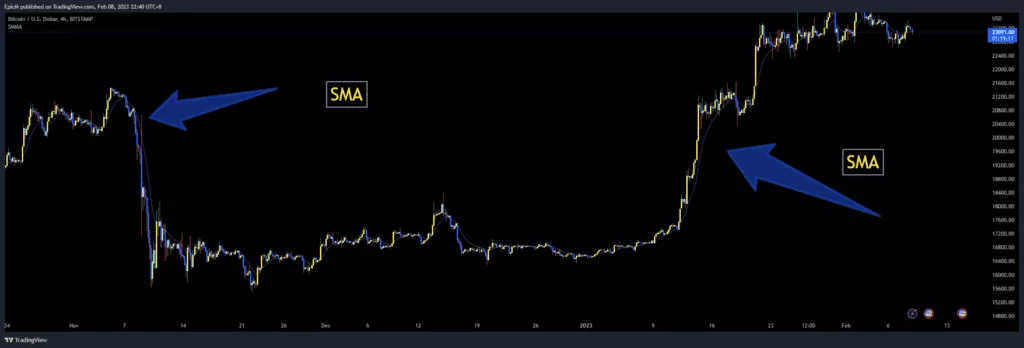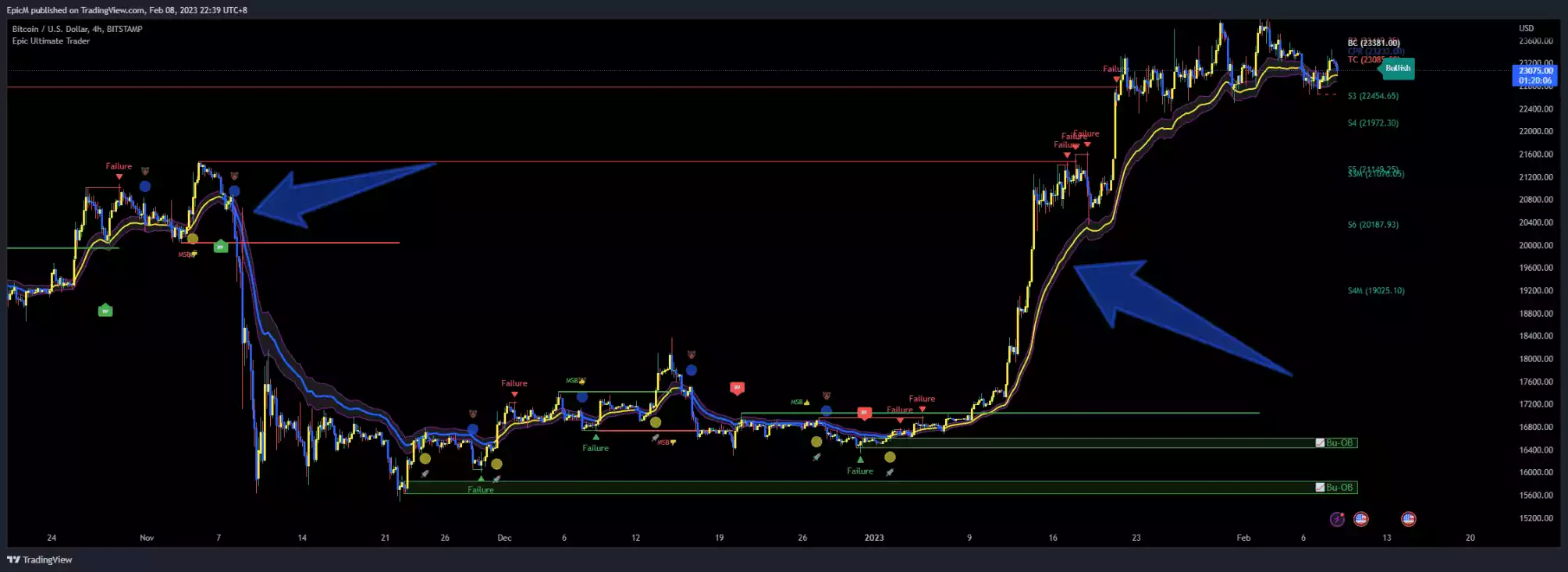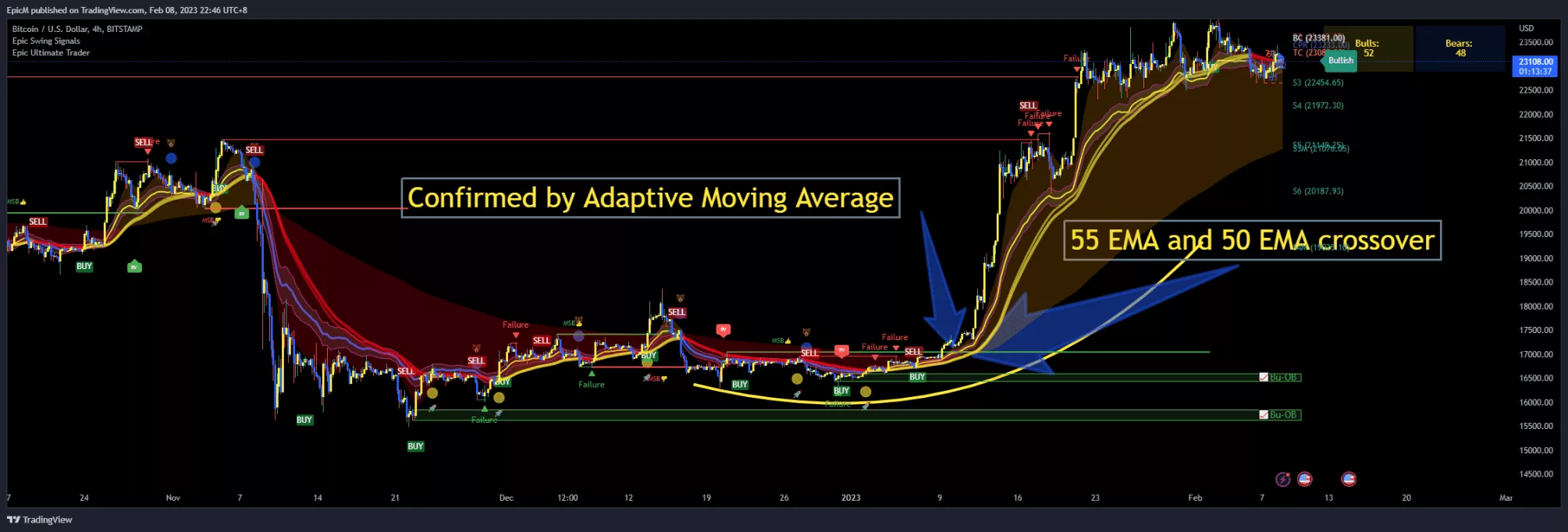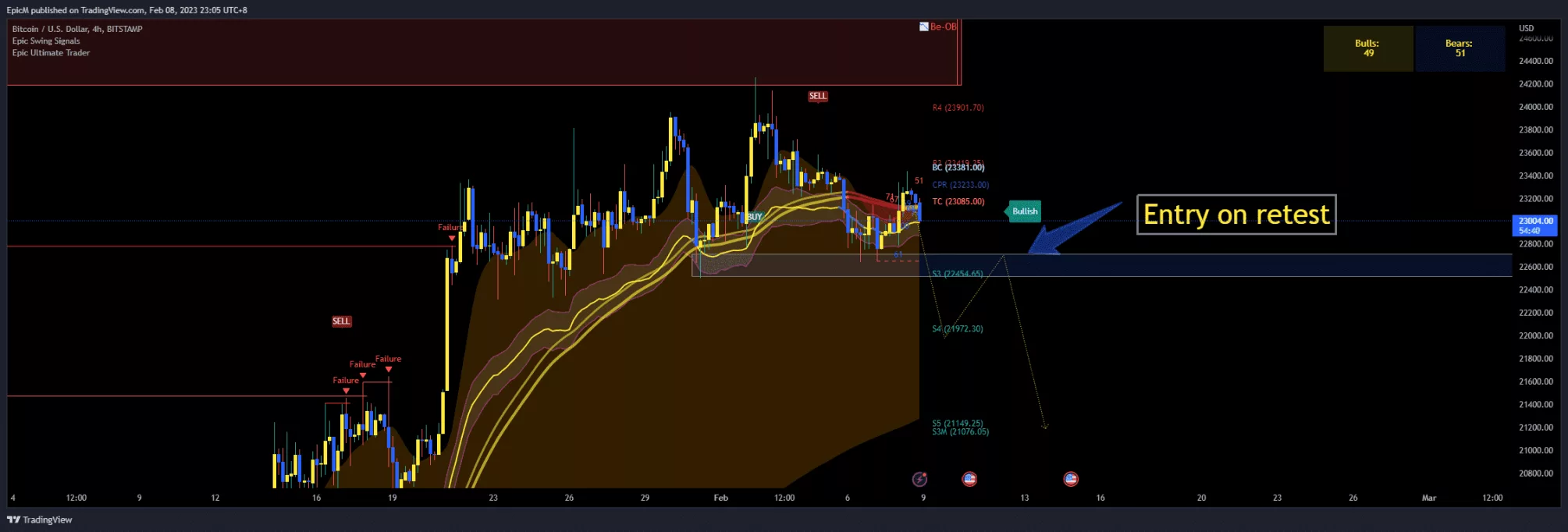As an investor who seeks to amplify your trading profits, understanding the principle of the Exponential Moving Average (EMA) in trading is critical. Utilizing EMA can significantly benefit investors wanting to optimize their investments. This thorough guide purposefully aims to enlighten you on all aspects of utilizing EMA in trading.
You’ll learn how EMA works, and why it’s such a great tool for investors. You’ll also get key tips on when and how to use it in practice. By the end of this guide, you’ll have all the knowledge needed to master EMA and level up your investing game!
So if you’re ready to take your trading skills up a notch with the help of EMA, let’s dive right in!
What Ema/Sma Indicators Are And How They Can Help Traders

Are you interested in using ema and sma indicators to help you trade? Then you’re in the right place. Ema and sma indicators are part of technical analysis, which is a powerful tool for investors to evaluate stock prices. These indicators can help traders make better decisions on when to buy or sell.
Let’s look at what exactly ema and sma indicators are. They are both mathematical formulas used to calculate the average price of an asset over a specified period. The difference between them lies in their weighting factors: The Exponential Moving Average (EMA) assigns a greater weighting to recent pricing data than the Simple Moving Average (SMA). With this information, traders can combine these two indicators to gain a more accurate forecast of market trends in the near term.
By combining technical analysis with ema and sma indicators, traders can gain insight into whether a stock price is likely to go up or down. Now that we know what ema and sma indicators are, let’s move onto using the exponential moving average formula to accurately calculate prices.
Using The Exponential Moving Average Formula To Accurately Calculate Prices
The exponential moving average (EMA) formula is an important tool for traders who want to accurately calculate prices. To understand how to use the EMA in trading, it’s important to understand what EMA/SMA indicators are and how they can help traders. Now, let’s focus on how you can use the EMA formula.
When using the exponential moving average strategy, you need to calculate the EMA first. The calculation begins with a simple moving average (SMA) of a certain period, such as 10 days or 20 days. Then you take the multiplier for that period and subtract one from it before multiplying it by the current price and adding that number to the previous day’s EMA value. This process continues until you have calculated all of your EMAs.
Once you have calculated all of your EMAs, you can look for a crossover between two or more EMAs or between an EMA and SMA line. This is known as an ema crossover and it’s used to identify trends and make trading decisions based on those trends. By understanding how to use an ema crossover analysis, traders can improve their trading strategies significantly.
Understanding Moving Average Crossover Analysis To Improve Trading Strategies
Trading with moving averages can feel like a game of chess. You need to expect your opponent’s next move and plan your own strategy accordingly. For using moving averages in trading, one of the most powerful tools is the Moving Average Crossover (MAC) analysis. This analysis helps investors make better decisions for trading strategies, as they can use different moving averages to identify potential entry and exit points.
To understand how MAC works, let’s look at two examples: short-term moving average (SMA) and long-term moving average (LMA). I usually set an SMA at 20 days or fewer, while an LMA has a period that exceeds 50 days. When these two lines cross over each other, it signals a change in momentum of the stock price–for example, if the short-term line crosses over the long-term line from below, it could show that there is buying pressure on the stock and vice versa. By understanding this concept, traders can use SMAs and LMAs with support/resistance levels and price action analysis for maximum profits.
How Traders Can Use Ema/Smas with Support/Resistance Levels And Price Action Analysis For Maximum Profits
Have you ever wondered if there’s a way to use ema/smas in trading that could improve your chances of making maximum profits? Well, combining moving average crossovers with support and resistance levels and price action analysis can be a powerful tool for trading success.
These indicators are all related and, when used together, they provide a comprehensive picture of what’s going on in the market. By using ema/smas to identify entry points, traders can then look for additional confirmation from support and resistance levels or by analyzing price action. This will help them make better-informed decisions about when to enter or exit a trade. It also allows traders to manage risk more effectively by setting stops and limits at key levels.
With this approach, traders can capitalize on market trends without falling victim to false signals or being too heavily influenced by emotion. Of course, it is important to recognize the potential pitfalls of relying too much on ema predictions for trading decisions as well.
Recognizing Potential Pitfalls Of Relying Too Much On Ema Predictions For Trading Decisions
When investing in stocks, using an Exponential Moving Average (EMA) can be a great technical indicator. But relying too much on it for trading decisions can be dangerous. It’s important to recognize the potential pitfalls of putting too much faith in EMA predictions.
First off, EMAs are lagging indicators – meaning they follow the price action rather than predict it. While useful for recognizing trends, this can lead to traders entering trades too late and missing out on profits. EMAs are not very reliable in choppy markets as they flatten out and lose their signal strength.
Traders should consider other factors, such as support/resistance levels and price action analysis, before making any trade decisions. Here are five tips for using EMA effectively:
-Take into consideration other technical indicators when looking at price movements;
-Be aware of false signals when an EMA crosses over or under another line;
-Remember that EMAs are lagging indicators and may not always accurately predict future price movements;
-Use EMAs with support/resistance levels and price action analysis;
-Never rely solely on an EMA prediction when deciding whether to make a trade.
By understanding the potential pitfalls of relying too heavily on EMAs for trading decisions, investors can better use them as part of their overall trading strategy. When used correctly, EMA can help maximize profits by giving traders a better idea of the current market sentiment and trend direction.
Frequently Asked Questions
What Other Indicators Can Be Used with Ema?
Do you want to take your trading game to the next level? You’ve heard about EMA, and now you’re wondering what we can use other indicators with it. Don’t worry–I’m here to help!
Figuring out which indicators to use is like putting together a puzzle. Each piece fits into the others and helps form a complete picture. To get the most out of EMA, it’s essential to understand which indicators work well with it and why they should be included in your strategy.
There are many technical indicators that can be used in combination with EMA, such as trend lines, moving averages, MACD (Moving Average Convergence Divergence), RSI (Relative Strength Index) and Bollinger Bands. These indicators provide additional information about the market trends that can help traders make more informed decisions about when to buy or sell a particular asset. In addition, risk management strategies, such as stop-loss orders, may also be employed alongside EMA for added security.
No matter what type of trader you are, there’s an indicator out there that can help you make smarter decisions about entry and exit points in the market. It’s important to experiment with different combinations of indicators so that you can find the one that works best for you–and don’t forget to factor in EMA! With a bit of practice and dedication, you’ll soon be making profitable trades regularly.
What Are The Risks Associated With Relying On Ema Predictions For Trading Decisions?
Using Exponential Moving Averages (EMA) for trading decisions can be a great way to maximize profits and minimize losses. However, there are also risks associated with relying too heavily on EMA predictions. In fact, a recent study found that nearly 80% of traders make wrong decisions when relying solely on EMA predictions.
Given this statistic, it’s important to understand the potential risks of using EMA as your only indicator. First, as with all indicators, there is always an element of lag because we derive EMA from historical data rather than future projections. This means that you may predict a trend based on past data that does not reflect future market conditions—leading to inaccurate predictions and potential losses.
Another risk of relying solely on EMA is that the indicator may not consider other important factors, such as news events or economic releases, which could affect price movements in the short-term. Thus, while EMA can be a helpful tool for timing trades and identifying trends, it should never replace fundamental analysis or other forms of technical analysis, such as support/resistance levels and volume analysis. By combining multiple indicators and using fundamental analysis, traders can better reduce their risk and increase their chances of success in the markets.
What Is The Best Time Frame To Use Ema?
For trading with EMAs, the time frame you use can make all the difference. After all, this type of technical indicator is because price movements in a particular time frame can predict future price movements. So, if you’re looking to maximize your profits, you need to know what the best time frame is for using an EMA.
To find out what time frame works best for your trading strategy, it’s important to do some research and experiment with different time frames. You can start by looking at historical data and seeing how different EMAs have performed in various settings. You may also want to consider factors such as volatility and market trends when deciding which time frame will be most effective for your trades. Ultimately, finding the right time frame for using EMAs requires a bit of trial and error–but once you find one that works well for you, it can really help boost your returns.
How Can I Identify Support And Resistance Levels When Using Ema/Sma?
Using EMA/SMA to identify support and resistance levels can be a great way to make sure you are making sound investment decisions. So, how do you know when it’s time to buy or sell? Well, the answer is simple: by looking for support and resistance levels.
Support and resistance levels are areas where the price of a stock or asset has been rejected in the past. If the price of an asset rises above a certain level, that could be seen as resistance. Similarly, if the price falls below a certain level, that could be seen as support. By identifying these levels, you can gain insight into potential buying and selling opportunities. For example, if there is powerful support at a particular level, it may show that investors are bullish on an asset and are more likely to purchase it around that price point. If there is strong resistance at a certain level, it may show that investors are bearish on an asset and are more likely to sell it off at that price point.
Using EMA/SMA can help you identify these key support and resistance levels so you can make informed trading decisions with confidence. With this knowledge in hand, you’ll be well-equipped with better manage your investments and take advantage of any opportunities that come your way.
How Can I Use Ema To Identify Entry And Exit Points For Trades?
For trading, there’s nothing more important than being able to identify entry and exit points. That’s why so many investors turn to the Exponential Moving Average (EMA)–a technical indicator that can give you an edge for trading decisions.
Using the EMA, investors can calculate how prices have moved in the past, so they can make better-informed decisions about their next trade. This comprehensive guide will help you understand how to use the EMA to identify entry and exit points for trades, so you can maximize your returns and minimize your risks.
To get started with EMA, it’s important to understand what exactly it is. Basically, the EMA helps traders recognize trends in prices by plotting a line on a chart that reflects the average of recent price movements. By looking at this line, traders can assess whether prices are going up or down, enabling them to make more informed decisions about where and when to enter and exit trades. Combining EMAs with other indicators such as support and resistance levels can give traders even more insight into price movements and help them fine-tune their trading strategies.
So if you want to get a better handle on your trading decisions, then learning how to use EMAs is key! With a bit of practice and patience, you’ll be well on your way towards getting the most out of your trades.
Conclusion
In conclusion, EMA is a powerful tool for investors who are looking to make smart trading decisions. With its ability to identify trends and its weighting towards recent data points, it can help traders make sound judgments with confidence. While there are risks associated with relying on EMA predictions solely, when used with other indicators, such as support and resistance levels, it can be an incredibly effective way of trading.
Not only is using EMA a great way to identify entry and exit points, but it is also incredibly simple to use. With just a few clicks of your mouse or taps of your fingers on your smartphone, you can be up and running, making profitable trades in no time! And the best part? You don’t need any prior experience or knowledge; all you need is the willingness to learn how to use EMA correctly and you’ll be well on your way to success.
In short, EMA provides investors with an invaluable tool that can help them make informed trading decisions quickly and efficiently. With the right time frame and knowledge about risk management strategies, you too can become an expert trader in no time! So what are you waiting for? Get out there and start using EMA today!






